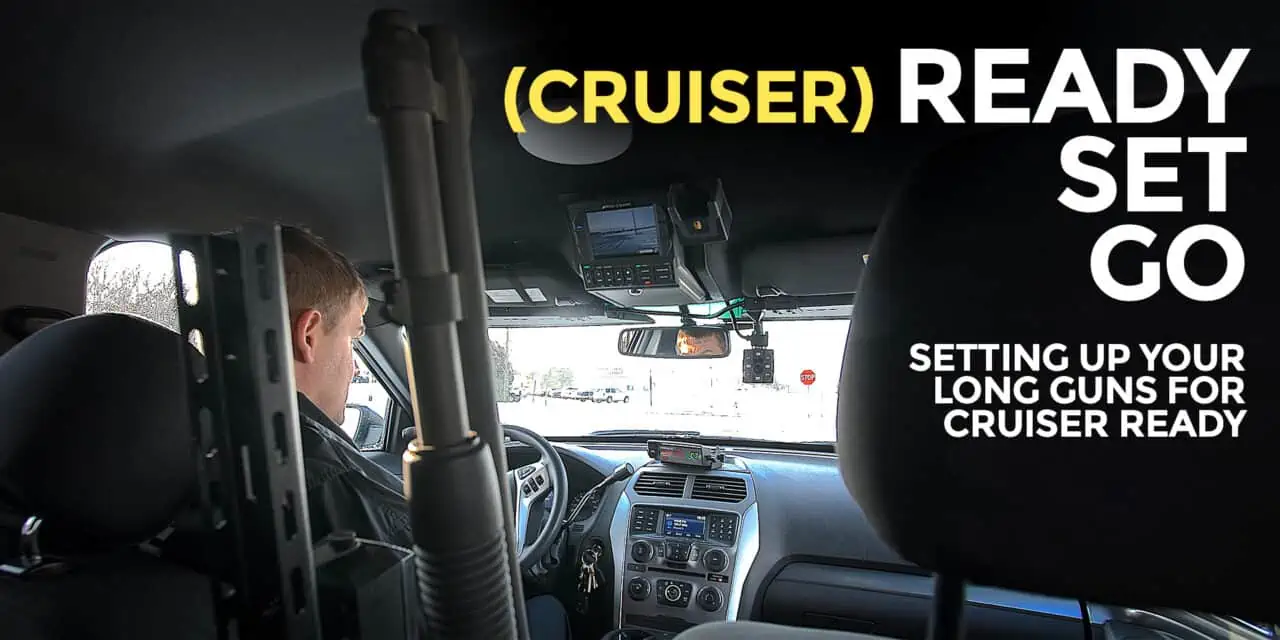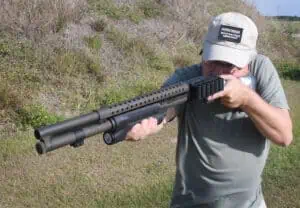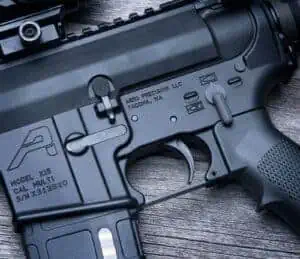What is Cruiser Ready?
It’s an iconic scene in American law enforcement. The patrol officer in his squad car, radio in the dashboard, lights on top of the car, and a shotgun between the front seats. A shotgun is an effective fighting tool that brings more to the party than a pistol does. This is why we find them in police cars as well as inside many homes across America. You’re most likely to find the shotgun inside of a police car in a “cruiser ready” condition. Therefore, it might just be a good idea for your home defense firearm as well.
Before we talk about what cruiser ready is, let’s talk about how we describe a loaded gun. It seems easy. A gun is either loaded, or it’s not, right? Not necessarily. As we mentioned in an earlier article on Israeli carry, there are actually four different conditions for a loaded firearm.
What’s Your Condition?
Condition 0: The magazine/cylinder is loaded, there is a round in the chamber, and all safeties are off. In Condition 0, the gun is ready to go “BANG!” the instant the trigger is activated.
Condition 1: There is a magazine in the firearm, a round in the chamber, and you have engaged all appropriate safeties. This, in theory, is how the guns are meant to be carried. The difference between the theory and the reality is why we have cruiser ready.
Condition 2: The magazine is loaded, a round is in the chamber and the hammer is forward (i.e. uncocked). This isn’t really applicable to the guns that can be carried in a cruiser ready condition. This is more for hammer-fired, double action/single action guns like some semi-automatic pistols and double-action revolvers.
Condition 3: The magazine is full and in the gun but there is no round in the chamber. We call this “Israeli Carry.” It’s also applicable to long guns, and is very similar to being cruiser ready.
Condition 4: The magazine or cylinder is empty or not the gun, and there are no rounds in the chamber.
Setting Up Your Gun For Cruiser Ready
When a gun is set up to be cruiser ready, the trigger is back, as if it had been fired. The magazine is full, but there is no round in the chamber. The safeties are off, and all that needs to happen to get the gun up and running is work the action as if you were loading another shell in the chamber. On a pump action shotgun, you work the slide. On a semi-automatic shotgun, you bring the bolt back and let it go. On an AR, you run the charging handle back and let it go. Simple, intuitive, and if you own any of those guns, you’ve already performed those actions hundreds, if not thousands of times.
Now let’s discuss how the safeties work on your shotgun. The two most popular pump-action shotguns on the market, the Remington 870 and the Mossberg 500. Both have safeties that engage the trigger of the gun, rather than the action. According to Tim Chandler, an acknowledged expert on defensive shotguns, this can be a problem in the rough-and-tumble world of law enforcement.
Safety First, Safety Second, Safety Always
“The precariousness of the fire control group in all shotguns tmakes riding around with a loaded chamber in a police cruiser a bad idea,” says Chandler. “The gun sitting in the cruiser, especially oriented vertically as they used to be, is constantly getting jostled as the vehicle is being driven. Throw in the abject neglect that most shotguns have been exposed to, and the end result is that going over a set of train tracks can result in an unintentional sunroof.”
Cruiser ready carry is designed to help prevent this from happening, and it also helps keep your home defense AR-15 safe from accidental discharges. I competed in 3 Gun competitions for many years. It was not uncommon for a competitor to be disqualified from a match because his (or hers) AR-15 performed a “slam fire” during a match. A slam fire happens when the force of movement, such as jumping down from firing position, is sufficient enough to move the bolt carrier group inside the gun and cause an accidental discharge.
Setting Up For Cruiser Ready
However, it takes some caution to set up your gun to be cruiser ready. The trigger is back as if you shot the gun. That means you have to pull the trigger, and if there is a round in the chamber when the trigger is pulled. This also means you (and possibly someone around you) is going to have a very bad day. Visually and physically inspect your gun before you set it up to be cruiser ready. When that is done, go through the following steps.
- Double check your empty gun to make sure your gun is unloaded. There should be no rounds in either the chamber or the magazine. Do this with both your eyes and your fingers.
- Close the action and point the gun gun in the safest possible direction.
- Pull the trigger.
- Either load the magazine tube if you’re running a shotgun, or insert a magazine into the magwell if you’re using an AR-15.
- Leave it alone. It’s now cruiser ready.
Note that on some shotguns such a Benelli or a Beretta, you may also need to open the loading gate as part of step four to load rounds into the magazine. It’s also important to remember that even though your gun doesn’t have a round in the chamber and won’t fire if you press the trigger, the other rules of gun safety still apply, so treat it as if it was loaded and keep it pointed in a safe direction.
Not Just For Shotguns
But I don’t carry my AR or shotgun in a police car, you say. Why do I want to set up my defensive long gun in a cruiser ready condition? Two reasons.
- Simplicity of training. The procedure for getting a cruiser-ready gun into action is the same as loading your gun in any other circumstance. No need to work about working safeties and the like, just load a round and you’re good to go.
- Safety. Mechanical safeties fail. However, if there’s nothing in the chamber when they fail, nothing bad can happen. This is why I prefer cruiser ready carry for any gun that I’m carrying off my body in a holster or backpack.
I should note here that there is a big difference between carrying a long gun in a cruiser-ready condition and carrying a pistol in a holster without a round in the chamber, aka “Israeli Carry.” A pistol is a defensive tool that’s easy to carry and easy to conceal. A rifle or shotgun is neither of those things. A pistol in the gun you use when the fight finds you. An AR or a shotgun is for when you know the fight is coming and can’t avoid it. This means you’ll have time to get your long gun ready for action, but you probably won’t have that time if you need to defend your life with your concealed carry gun.
Cruiser Ready All Things
Because it’s an intuitive way to get your long gun ready for action, cruiser ready is also an ideal setup for your home defense gun. You run the action every time you need to load the gun, so simply grab your gun and charge it, and you’re ready to defend what’s most important to you. Cruiser ready isn’t just for law enforcement. It’s also an ideal way to keep your defensive long gun safe until you need them the most.




